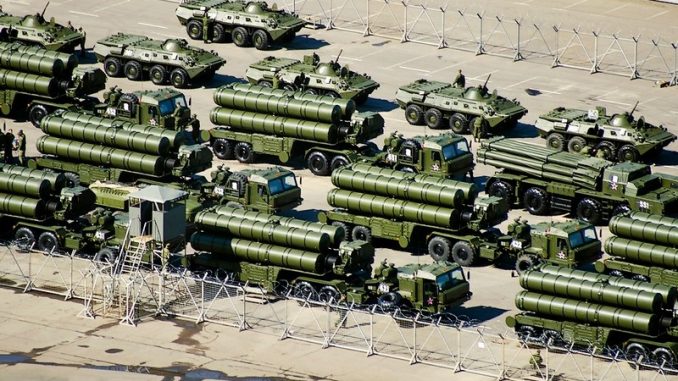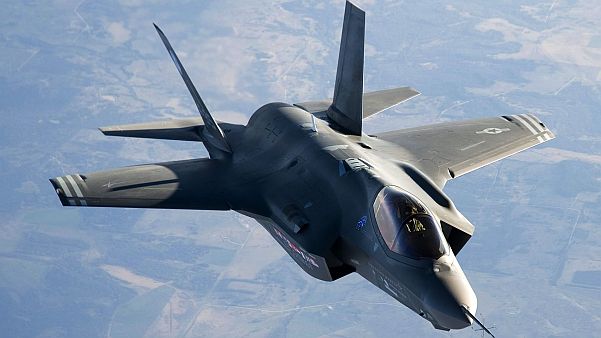
The project to create the brand new F-35 Stealth Fighter did not take into account the comparatively cheap Russian S-400 surface-to-air missile system that can shoot it down.
The relatively inexpensive $500 million S-400 missile system has made the trillion dollar F-35 fighter programme obsolete. The sale of the Russian S-400 missile system to China is not only a milestone in the two countries relationship but an example of how an inexpensive missile system can penetrate a trillion dollar project.

BYPASS THE CENSORS
Sign up to get unfiltered news delivered straight to your inbox.
You can unsubscribe any time. By subscribing you agree to our Terms of Use
Latest Video
Russia and India report:
In November 2014 Moscow and Beijing inked a $3 billion agreement for the supply of six battalions of S-400 anti-aircraft/anti-missile systems that will significantly boost China’s air defence capability against the US and its allies in the Western Pacific.
With a tracking range of 600 km and the ability to hit targets 400 km away at a blistering speed of 17,000 km an hour – faster than any existing aircraft–the S-400 is a truly scary weapon if you are facing its business end.First deployed by Russia in 2010, each S-400 battalion has eight launchers, a control centre, radar and 16 missiles available as reloads.
Unlike the overhyped US Patriot missile that turned out to be a dud in battle, the S-400 was designed to create the daddy of Iron Domes. “Given its extremely long range and effective electronic warfare capabilities, the S-400 is a game-changing system that challenges current military capabilities at the operational level of war,” Paul Giarra, president, Global Strategies and Transformation, told Defense News. The S-400 will have the “effect of turning a defensive system into an offensive system, and extend China’s A2/AD (anti-access/area-denial) umbrella over the territory of American allies and the high seas.”
But first a bit of background. The S-400 was developed to defend Russian air space and a few hundred kilometers further against missiles and aircraft of all types, including stealth. Because it is a highly potent and accurate weapon that can tip the balance of power in any war theatre, Moscow has long resisted the temptation of exporting even its older iteration, the S-300, to troubled allies Syria and Iran.
An S-300 missile fired from, say, Damascus will blow away an aircraft over central Tel Aviv in about 107 seconds, giving the Israelis just enough time to say their prayers. It is precisely because the S-series missile systems can so dramatically upset the military balance that Israel has pressured Russia against introducing it into the Middle East tinderbox. Israel has also warned it would go after Syrian S-300 batteries with everything it’s got.
However, China’s case is different because the chances of another country daring to take a shot at the Chinese are next to zero. This development is really bad news for the F-35.
Russia and the US have traditionally adopted different military strategies. During the Cold War the US relied upon carrier-based aircraft to project power in the Western Pacific, and the strategy continues today. The Russians on the other hand decided these floating airfields were easy targets for their shore-based long-range aviation and anti-ship cruise missiles.
If it came to war, waves of long-range bombers such as the Tu-95M Backfire would take off from safe bases deep in continental Russia, fire their powerful cruise missiles from safe stand-offdistances and blast the carriers out of the water. The Russian pilots would then head home to watch the damage on CNN!
The Russian logic was elegantly simple. Back then the average nuclear powered aircraft carrier cost$1 billion whereas the average anti-ship cruise missile cost $1 million or less. For the money they’d have spent on a single carrier, the Russians figured they could build a thousand cruise missiles. Even if just a fraction of these missiles got through, all American carriers were dead in the water.
The Russians were so sure about the accuracy of their cruise missiles that the Backfirescarried only one Raduga Kh-22 (NATO name AS-4 Kitchen) missile armed with a nuclear warhead. According to weapons expert Bill Sweetman and Bill Gunston these missiles could be “programmed to enter the correct Pentagon window”.

China too is following the same trajectory. It has adopted the Russian Cold War strategy of attacking aircraft carriers with waves of bombers armed with its cruise missiles(that are knockoffs of Russian missiles). In fact, complete destruction of a carrier isn’t necessary; even slight damage can put such large vessels out of commission for months. And since wars don’t last that long these days, the crippling of its carrier arm will force American capitulation early on in any conventional conflict.
To counter the missile threat to its carriers, the Americans are relying on the F-35 as a cruise missile killer. More than a trillion dollars have already been spent on this troubled project. Even if the F-35 is able to miraculously overcome its shortcomings, the S-400 upends this strategy.
Lockheed-Martin claims the F-35 has such advanced electronics that it can jam anything directed at it.But the S-400 won’t be easy to shake off. “It has many features specifically designed to overcome countermeasures and stealth, such as a larger, more powerful radar that is more resistant to jamming. It also actually has a set of three missiles of varying range that provide overlapping layers of defense,” Ivan Oelrich, an independent defence analyst told The Diplomat.


